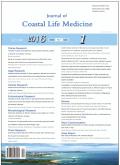Thermotolerant coliform counts and nutrient levels as indicators of water quality in sub-Mediterranean karst river
引用次数: 1
Abstract
Neretva is a karst river in Southeastern Bosnia and Herzegovina and the largest tributary of the Adriatic Sea in the Balkans. Its basin is hydrologically specific, with remarkably developed ground and underground water systems. In its upper catchments Neretva is a typically alpine, pristine river, with the spring located deep in Dinaric Alps at an altitude of 1 227 m. The main feature of Neretva’s middle catchments are the breathtaking canyons with limestone cliffs up to 1 200 m high, estimated to be more than 175 million years old[1]. In the lower catchment areas, Neretva with its complex hydrography and influence of the Adriatic Sea turns into a wide and slow lowland river. Its exceptionally rich alluvial meandering delta is enlisted as a Ramsar site of an international significance. Biological diversity is a main characteristic and quality of this region. There is a large number of life forms and communities with a high degree of complexity and biogeographical significance, due to varied climatic impacts along horizontal and vertical profiles of the basin, which vary in altitude for over 1 000 m. High mountains of the basin preserve numerous arctic and alpine relicts, which were distributed throughout Dinaric Alps during the ice age[2]. Within the researched area of the basin, sub-Mediterranean influence and different potamological factors contribute to development of thousands of plant and animal species with a high degree of endemism. A significant natural attribute of the region are pristine spring waters.耐高温大肠菌群和营养素水平作为地中海下岩溶河流水质指标
内雷特瓦河是波黑东南部的一条喀斯特河,是巴尔干半岛亚得里亚海最大的支流。它的流域具有特殊的水文特征,具有非常发达的地面和地下水系统。在其上部集水区,涅雷特瓦河是一条典型的高山原始河流,其泉水位于海拔1227米的迪纳尔阿尔卑斯山脉深处。内雷特瓦中部集水区的主要特征是令人叹为观止的峡谷,峡谷中有高达1200米的石灰岩悬崖,估计有1.75亿年的历史。在较低的集水区,由于其复杂的水文和亚得里亚海的影响,涅列特瓦河变成了一条宽阔而缓慢的低地河流。其异常丰富的冲积蜿蜒三角洲被列为具有国际意义的拉姆萨尔湿地。生物多样性是该地区的主要特征和特征。由于盆地水平和垂直剖面的气候影响不同,海拔高度在1000米以上,因此存在大量具有高度复杂性和生物地理意义的生命形式和群落。盆地的高山保存了大量的北极和高山遗迹,这些遗迹在冰河时期分布在整个第纳尔阿尔卑斯山脉。在该盆地的研究区域内,亚地中海的影响和不同的地貌因素促成了数千种具有高度地方性的动植物物种的发展。该地区一个重要的自然特征是原始的泉水。
本文章由计算机程序翻译,如有差异,请以英文原文为准。
求助全文
约1分钟内获得全文
求助全文

 求助内容:
求助内容: 应助结果提醒方式:
应助结果提醒方式:


